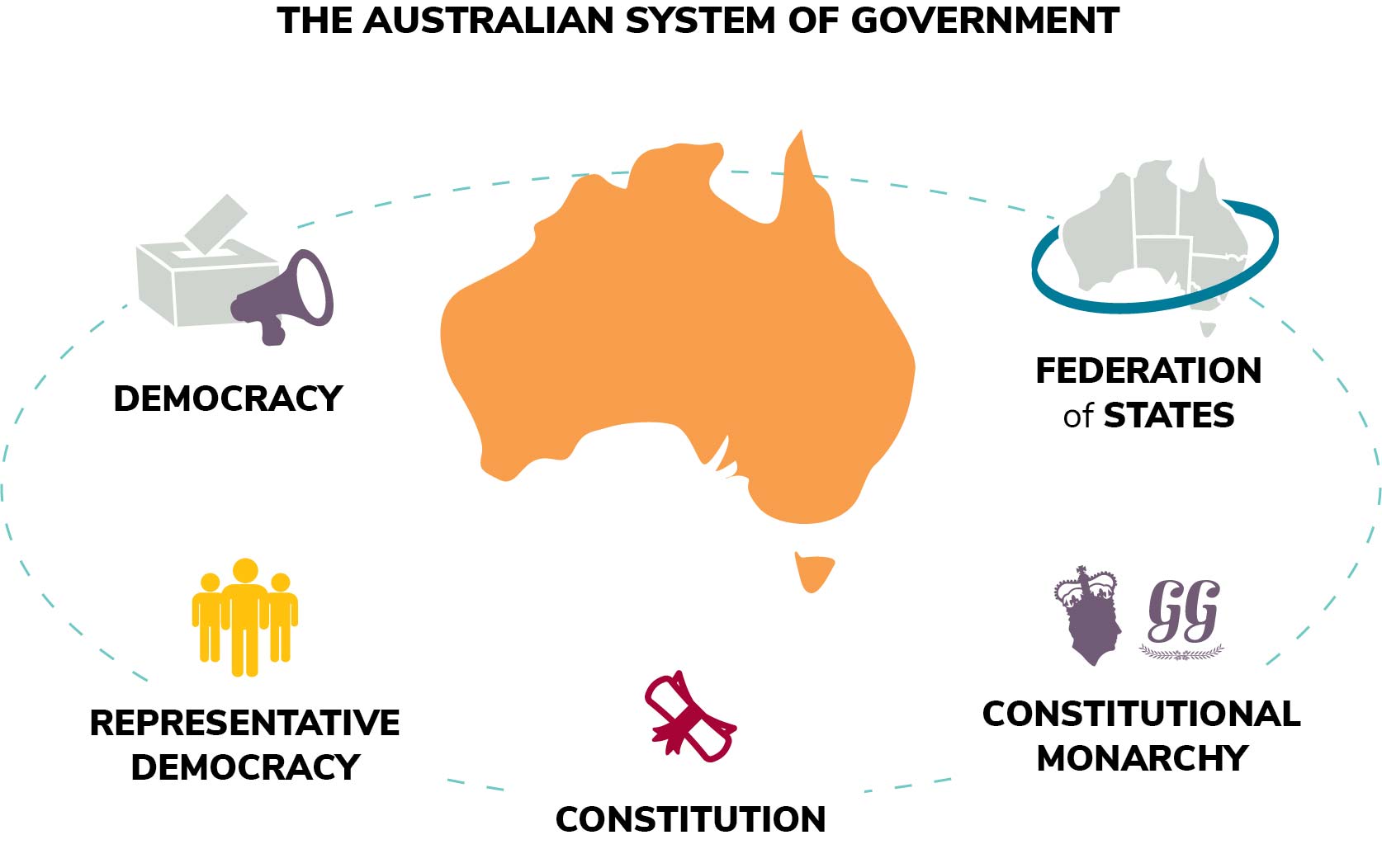Introducing ... Australia's system of government
Begin your exploration of the features of Australia’s system of government with this short introduction. Discover how power is shared and managed between different groups in Australia.
The Australian system of government.

Parliamentary Education Office (PEO.GOV.AU)
Description
This graphic illustrates the 5 components of the Australian system of government:
- democracy
- representative democracy
- consitution
- constitutional monarchy
- federation of states
Copyright information
This work is licensed under a Creative Commons Attribution-NonCommercial-NoDerivs 3.0 Unported License.
You are free to share – to copy, distribute and transmit the work.
Attribution – you must attribute the work in the manner specified by the author or licensor (but not in any way that suggests that they endorse you or your use of the work).
Non-commercial – you may not use this work for commercial purposes.
No derivative works – you may not alter, transform, or build upon this work.
Waiver – any of the above conditions can be waived if you get permission from the copyright holder.
A system of government is the structure and systems by which a country is run. Australia is a democratic country that has a mixed system of government.
Australia’s system of government is based on the British Westminster system.
Things you need to know
- Australia has a mixed system of government. It is a:
- Representative democracy—Australians vote for members of parliament to make laws on their behalf.
- Constitutional monarchy—The King is Australia’s head of state but does not have absolute power and is required to follow the Australian Constitution. The King gives his powers to the Governor-General.
- Federation of states—A Federation is a group of states who have given some of their law-making powers to a national government and kept some law-making powers for local matters.
- An important feature of Australia’s system of government is how the power to make and manage laws is shared between the parliament, the government and the courts. This is called the separation of powers.
Did you know?
A country can choose to change its system of government. For example, India, Fiji and Ireland were constitutional monarchies but are now republics with a president as their head of state.
